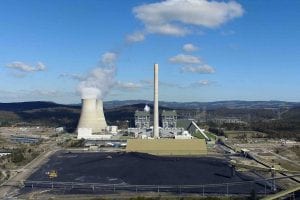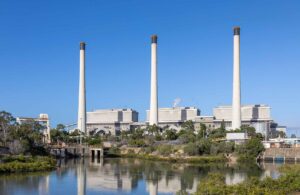The initial view from the Australian Energy Market Operator following last month’s dramatic events that triggered widespread outages was that there were no trips of major generators. That may not have been the case,.
Readers may remember that one day after Scott Morrison became prime minister, twin lightning strikes on adjacent transmissions lines, caused a catastrophic failure and triggered a series of cascading events that saw more than 1,160 MW of load shed – including three different pot-lines at two aluminium smelters – and Queensland and South Australia separate from the rest of the grid.
The South Australia separation was particularly poignant, as the Tesla big battery – derided by Morrison as about as useful as the big banana – played a key role in responding to the initial fall and surge in frequency in South Australia, and keeping the lights on.
AEMO said at the time that it knew of no generators that had tripped as a result of the twin lightning strike, but a routine report by the Australian Energy Regulator into price movements that week sheds new light.
According to the AER, one hydro plant, Stanwell’s 55 year old, Barron Gorge hydro power station tripped, removing 33 MW of capacity (one of its two units) after the separation, while CS Energy withdrew 419MW of capacity at the Gladstone coal-fired power station because of “boiler control issues” following the trip.
It offered no further information. The AER is, however, going to provide a more detailed report into the pricing on that day, because the market for frequency control and ancillary services shot up to the market cap of $14,500/MW in all regions, sending the total FCAS bill to $14 million for the day.
AEMO also released a preliminary report into the event just over a week ago, but it did not shed too much more light on the incident, apart from noting the speed at which events cascaded.
It had never seen a twin lightinight strike on two lines before, so it had not contemplated such an event as what it calls a “credible contingency”. But it does now, having seen what happened immediately afterwards.
According to AEMO, within eight seconds of the lightning strike, Queensland and South Australia were both separated, 81MW of industrial load in Tasmania was shed, and two potlines at the Tomago smelter in NSW were shed (617MW) and one hotlines at the Alcoa smelter in Victoria (278MW),
As well, a further 100,000 homes spread in various networks across NSW and the ACT were also cut off as another 125MW was shed.
“The simultaneous trip of two adjacent single circuit transmission lines due to a single or simultaneous lightning strike is a highly improbable occurrence,” AEMO notes in its preliminary report.
“Prior to this event, QNI was not considered vulnerable to lightning as there was no ‘probable’ or ‘proven’ risk of simultaneous strikes impacting both lines.”
AEMO did say that its preliminary findings suggested that the Operation of the Heywood Emergency Control Scheme – which now includes the Tesla big battery, formally known as the Hornsdale Power Reserve – operated to design, and can be seen responding prior to SA reaching the critically low level of 49 Hz.
In South Australia, prices initially fell to minus $1,000/MWh because of an excess of wind generation (the state had been exporting surplus capacity to Victoria at the time of the outage), while in Queensland prices jumped to $1,400/MWh.
That’s because AEMO had to instruct all coal generators to dial down to a maximum output of 350MW. This was to limit the amount of back-up generators required in the case that one of them tripped, as many generators had been co-opted to provide FCAS.








